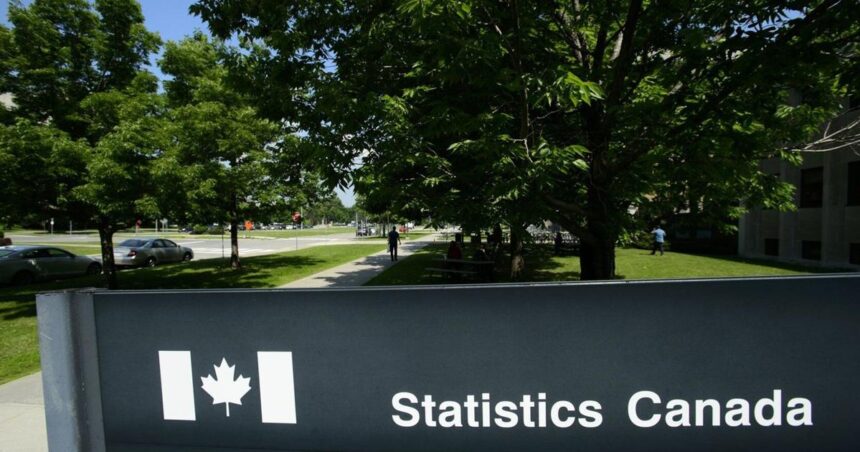In a striking development that has economists and policy experts buzzing, Canada’s income inequality has climbed to unprecedented levels during the first quarter of 2025. The latest Statistics Canada data paint a concerning picture of a widening gulf between the country’s highest and lowest earners—a trend that appears to be accelerating despite years of government promises to address the imbalance.
The figures reveal that the top 20% of Canadian income earners now command 49.7% of all income in the country, up from 45.8% just five years ago. Meanwhile, the bottom 40% of households collectively account for a mere 15.3% of total income, representing a continued decline from their already modest share.
“We’re witnessing a fundamental restructuring of Canada’s economic landscape,” explains Marianne Chen, senior economist at the C.D. Howe Institute. “This isn’t just statistical noise—it’s a persistent pattern that has serious implications for social cohesion and economic mobility.”
The timing couldn’t be more politically charged. With federal elections looming next year, the inequality statistics have instantly become ammunition in Ottawa’s increasingly heated policy debates. The ruling party points to recent initiatives like the expanded Canada Workers Benefit as evidence they’re addressing the problem, while opposition critics argue these measures amount to little more than window dressing on a structural problem.
What’s driving this record disparity? The data suggest multiple culprits, starting with the continued concentration of wealth among those with significant investment assets. Despite recent interest rate adjustments, stock markets and real estate—assets disproportionately held by higher-income Canadians—have delivered exceptional returns, creating what Chen calls a “wealth effect accelerator” for those already well-positioned.
At Toronto’s Yorkville Coffee, where a single specialty latte costs what a minimum wage worker earns in 20 minutes, tech executive Devon Mills acknowledges the disparity. “I see both sides of this equation,” he tells me. “My company is creating good jobs, but I can’t ignore that even our entry-level salaries put employees in the top 30% of earners nationwide. That’s not right.”
The regional dimensions of inequality tell an equally troubling story. In Vancouver and Toronto, the average home price now exceeds $1.4 million, pricing out not just low-income workers but increasingly middle-class professionals as well. In Atlantic Canada, despite moderate economic growth, wages have failed to keep pace with inflation, eroding purchasing power for many households.
Perhaps most concerning is what Statistics Canada calls the “mobility stagnation” evident in the data. Canadians born into lower-income households now face longer odds of climbing the economic ladder than at any point since measurement began in the 1980s. Only 4.7% of Canadians born in the bottom income quintile will reach the top quintile in their lifetime—down from 7.3% two decades ago.
“When we lose economic mobility, we’re sacrificing more than abstract economic principles,” warns Sophia Williams, director of policy studies at the Institute for Research on Public Policy. “We’re losing the social contract that says hard work and education should create opportunity.”
The Statistics Canada report also highlights concerning trends in who bears the brunt of inequality. Women continue to earn approximately 87 cents for every dollar earned by male counterparts in comparable positions. Indigenous communities face unemployment rates nearly double the national average. Recent immigrants, despite often having advanced degrees, earn 23% less than Canadian-born workers with equivalent qualifications.
Business leaders offer varied perspectives on these developments. The Canadian Federation of Independent Business notes that small business owners, particularly in the service sector, face margin pressures that limit their ability to increase wages substantially. Meanwhile, the Business Council of Canada has called for educational reforms to better align skills training with emerging economic opportunities.
Some bright spots exist amid the troubling statistics. The technology sector continues to create roles with compensation packages that can propel workers into higher income brackets. Recent provincial minimum wage increases have provided modest gains for the lowest earners, though economists debate whether these increases simply trigger price adjustments that offset real purchasing power gains.
Progressive economists point to international examples as potential roadmaps. Finland and Denmark maintain significantly lower inequality metrics while sustaining robust innovation economies. Their approaches typically combine progressive taxation, robust social services, and substantial investment in education and retraining programs.
The federal government, responding to the Statistics Canada release, has announced plans for what it calls a “Fairness in Economy Commission” to develop evidence-based recommendations. Critics note that similar commissions have produced substantive reports in the past, many of which have gathered dust once media attention shifts elsewhere.
For everyday Canadians like Winnipeg nurse Priya Sharma, the statistics confirm what daily life already makes clear. “I’m considered middle-income on paper,” she explains, “but between housing costs, student loans, and trying to save something for my children’s education, it feels like treading water. And I’m one of the lucky ones with stable employment.”
Financial vulnerability metrics show that 43% of Canadian households would struggle to cover an unexpected $1,000 expense without borrowing—a figure that rises to 67% among the bottom income quintile. This precarity creates ripple effects throughout the economy, reducing consumer confidence and limiting economic resilience during downturns.
As Parliament returns from summer recess next month, these inequality statistics will undoubtedly frame budget priorities and policy initiatives. Whether they translate into meaningful structural changes or become simply another talking point in Canada’s ongoing conversation about fairness remains to be seen. What’s clear from the data is that without intervention, the forces widening the gap between Canada’s haves and have-nots show no signs of naturally correcting.






